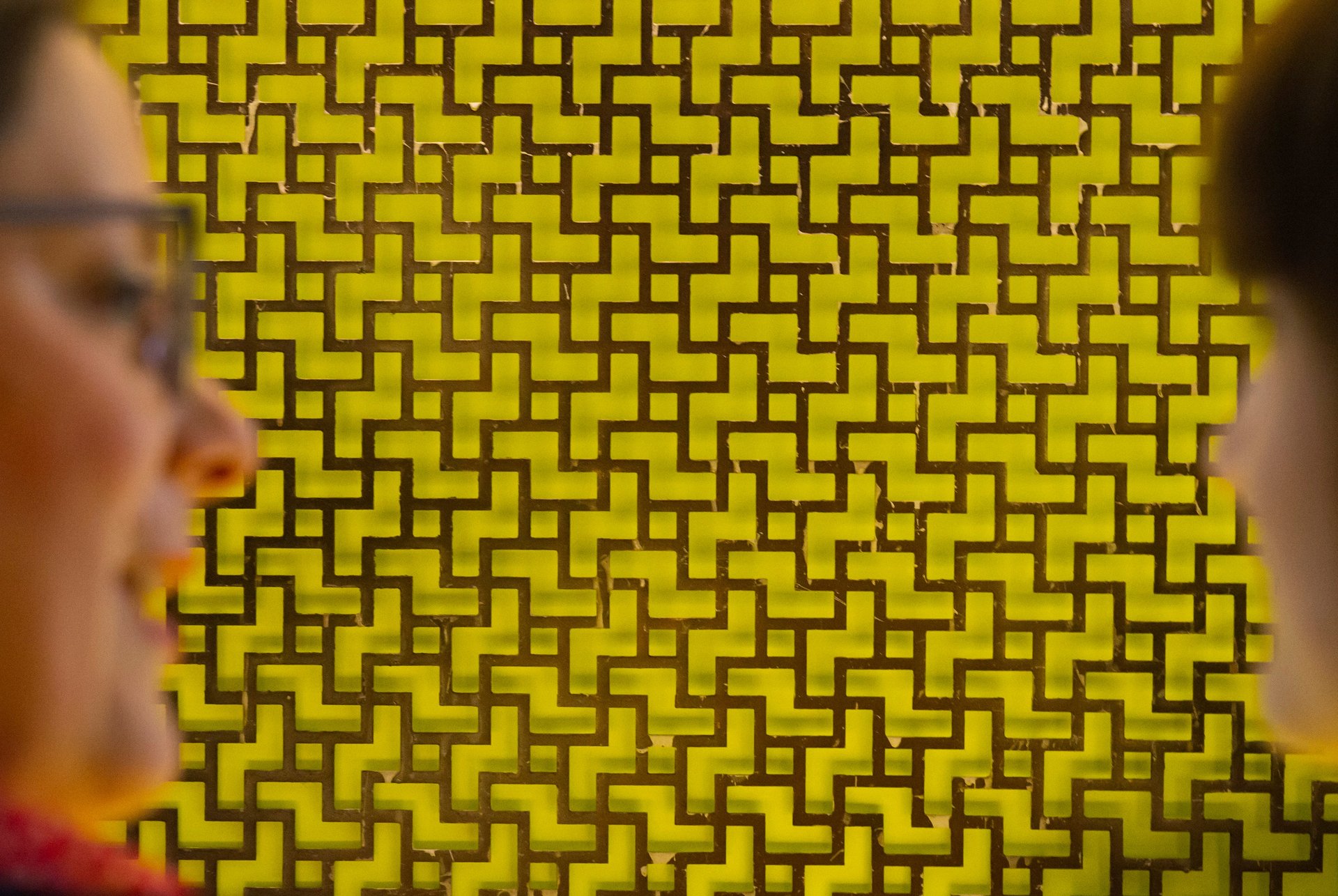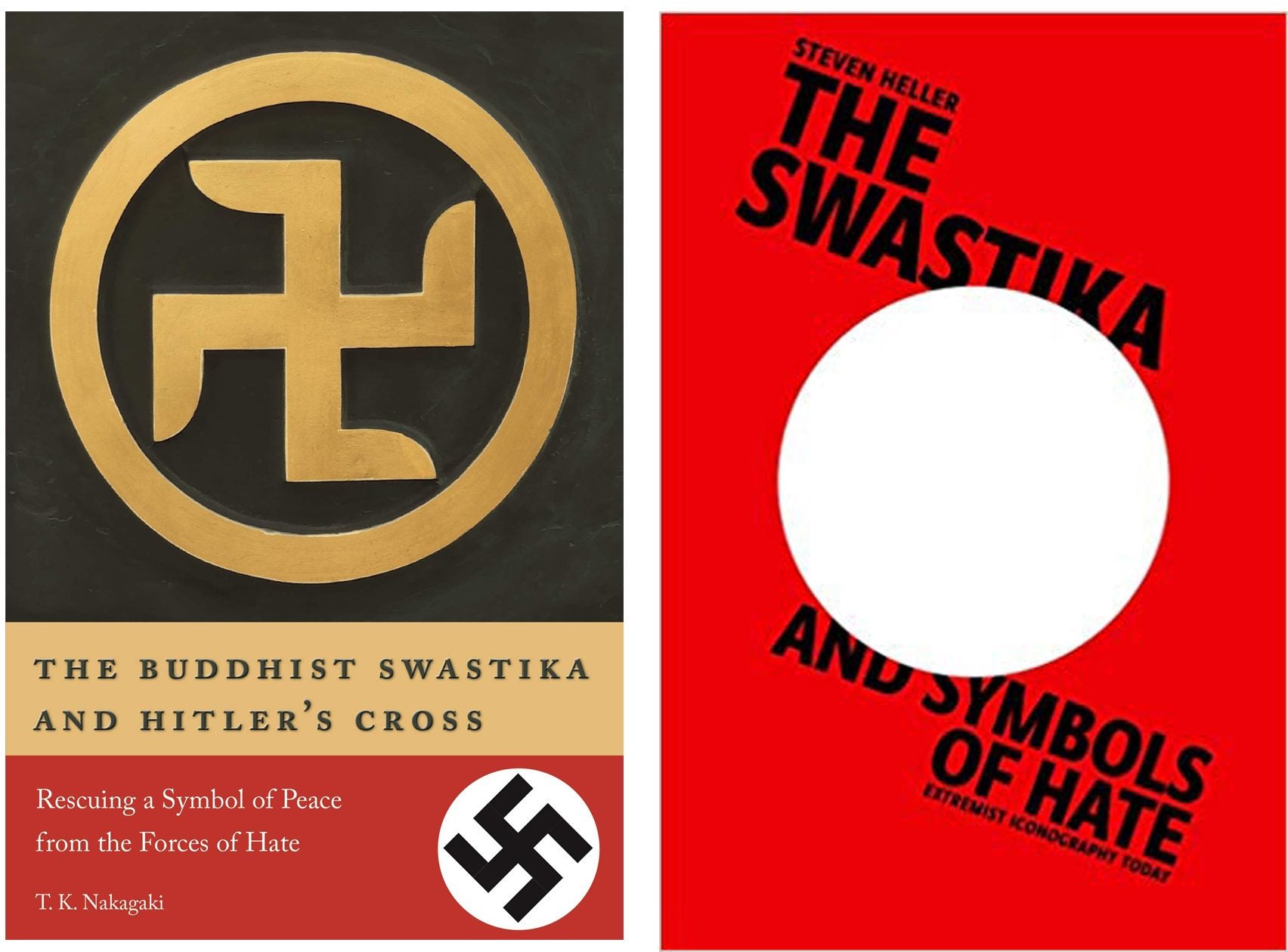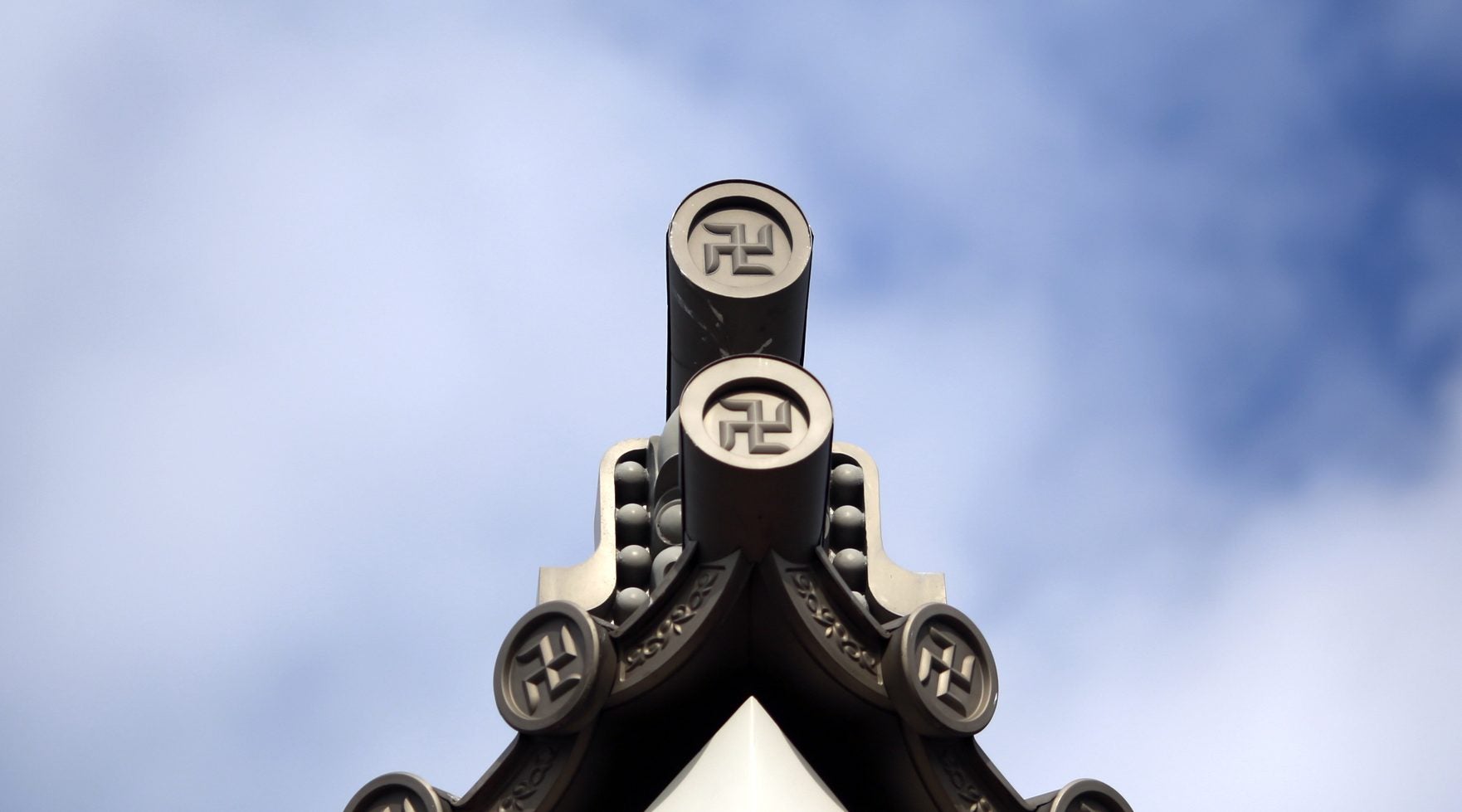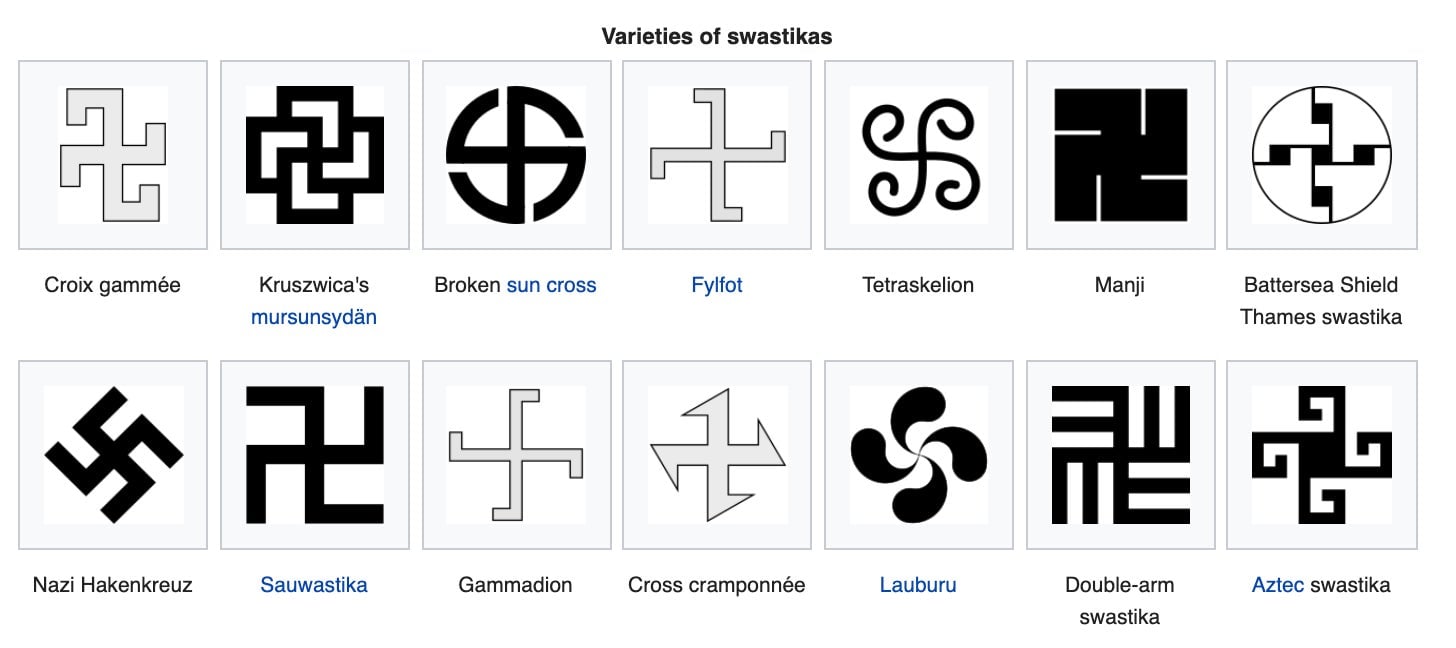Can the swastika ever reclaim its original meaning?
A Jewish historian and a Buddhist priest walk into a room with a swastika. The historian sees evil. The priest sees a sign of good luck. Can the two readings, representing the western and eastern lenses on the ancient symbol, ever be reconciled?


A Jewish historian and a Buddhist priest walk into a room with a swastika. The historian sees evil. The priest sees a sign of good luck. Can the two readings, representing the western and eastern lenses on the ancient symbol, ever be reconciled?
This was the topic of a joint lecture I moderated in November at the School of Visual Arts in New York. On one side was Steven Heller, eminent Jewish design historian, teacher, and author of The Swastika and Symbols of Hate: Extremist Iconography Today. On the other was T.K. Nakagaki, a Japanese Buddhist priest and linguist who wrote the book The Buddhist Swastika and Hitler’s Cross: Rescuing a Symbol of Peace from the Forces of Hate.
For Heller, seeing the swastika triggers thoughts of his great-grandparents, who were killed on the way to Auschwitz. “I feel a sense of loss,” he says. With the resurgent menace of Nazism in today’s white nationalist movements, Heller believes the swastika cannot be redeemed—at least not in the West. “I have written articles about serious attempts at reclamation and rehabilitation,” he writes in his book. “Initially, I was sympathetic. However, as long as the Nazi iteration continues to elicit destructive power, there is no way it will ever be redeemed.”
After coming to the US 25 years ago, Nakagaki chose to abstain from using the symbol, in deference to the Western perspective. It was only around 10 years ago, when he heard someone refer to the swastika as a universal symbol of evil, that he began to actively write a corrective. His goal, he says, is to show there’s an alternative reading of the ancient symbol, which has roots in the Indus Valley around 500 BC.

A mirrored swastika (卍) is called manji in Japan, where it is a sign of prosperity and good luck. The manji is used to indicate the location of Buddhist temples in local maps and signs.

Swastikas are also ubiquitous in India. It’s common to see it painted on temples or floor paintings during festivals. For Indians, seeing a swastika is an auspicious blessing for good health. The word originates from Sanskrit, as in “swasth” for health and “tika” meaning mark.
“My point is awareness,” says Nakagaki, who is the protagonist of Manji, a documentary about his crusade to contextualize the symbol in the historical Eastern context.
The matter became more relevant and urgent when the Japan Geospatial Information Authority briefly toyed with the idea of eliminating the symbol from maps and signage. The agency proposed marking temples, for the 2020 Tokyo Olympic Games, with a more generic pictogram of a pagoda. But cultural heritage advocates including Nakagaki prevailed in quashing the idea.
In their 60-minute panel, Heller and Nakagaki demonstrated how developing an understanding of the swastika is fraught with both rational and emotional layers. And perhaps more importantly, they modeled how a respectful and honest exchange can chip away at seemingly insurmountable divisions—even though no clear conclusions emerged.
A clarification
The Nazi symbol isn’t technically a swastika. In his book, Nakagaki argues that the central motif on Nazi banners is a hooked cross or hakenkreuz. He notes that Adolf Hitler never used the world “swastika” in Mein Kampf, and that it was English translators who introduce the term in the parlance. Nakagaki, who has a masters degree in linguistics from California State University, suspects that using “swastika” instead of “hooked cross” was meant to distance the Nazi symbol from Christian symbology.
Swastikas or sauwastika in fact comes in several variations and are represented in various languages. It’s might be called a croix gammée, a whirling log, fylfot, tetraskelion, gammadation, or cross cramponnée, for instance. Linguistic accuracy is essential because it can isolate the reviled Nazi emblem from all other swastika-like symbols, argues Nakagaki.

Before the Nazis used it as their party emblem, the swastika was a benign decorative mark. It appeared in food packaging, Boy Scout handbooks and medals, sports jerseys, architectural façades, textiles, even a Coca-Cola souvenir keychain. The swastika was a stock printer’s clip art, like flowers or geometric shapes. Graphic designer Wilhelm Deffke created a logo featuring a “swastika in a cogwheel,” which the Nazis took and never paid for.


But to many who suffered during the Nazi regime, the linguistic nuance is moot. “Whether Hilter called it that or not, it doesn’t matter,” says rabbi Brad Hirschfield, president of the National Jewish Center for Learning and Leadership, in an exchange with Nakagaki captured for the documentary. “If that’s the last thing the person you loved most in the world experienced was a person wearing that symbol before blowing their brains out. It doesn’t matter—there’s no maybe!”
A way forward
In some ways, defending the swastika to a western, largely Jewish audience in New York seems like a lost cause. But Nakagaki says kindling a conversation is already a victory. “The important thing is that Manji starts a dialogue,” he says. “Peace is always on my mind, and this is a peace symbol. We have to consider how we understand and consider one another. To reclaim the symbol means reclaiming part of history.”
Yousuke Kiname and Adam Weissman, documentary filmmakers who have been trailing Nakagaki around the world over the past few months, say the experience has been illuminating. “It introduced me to a part of history that I never knew about. Even when I was growing up in Japan and saw the Buddhist swastika (or manji) all around, you’re really not taught the origins or why they are used in Buddhism,” says Kiname. “The taboo nature of the swastika in the West doesn’t allow for much conversation about it.”
He suggests that 74 years after the fall of the Nazi party, perhaps more people may be ready to listen. “I went into filming expecting a lot of resistance and pushback but that hasn’t really been the case,” he tells Quartz. “I’m finding more and more how complex this issue is because of how ubiquitous the swastika has been throughout history among many cultures…I believe personally, even more now, that this is the time to address the subject.”
It seems there are others who feel the same way. At the lecture I moderated on the topic, there was no one tweeting or taking photos, just pure attention, which is so rare these days. An attendee graciously wrote to me a few days later, “It was one of the more thought-provoking talks we’ve been to in a long time. In fact, we are still talking about it!”
It made me believe in the power of civil discourse to open us to new worlds, so that we might develop appreciation, if not outright acceptance, of other points of view.